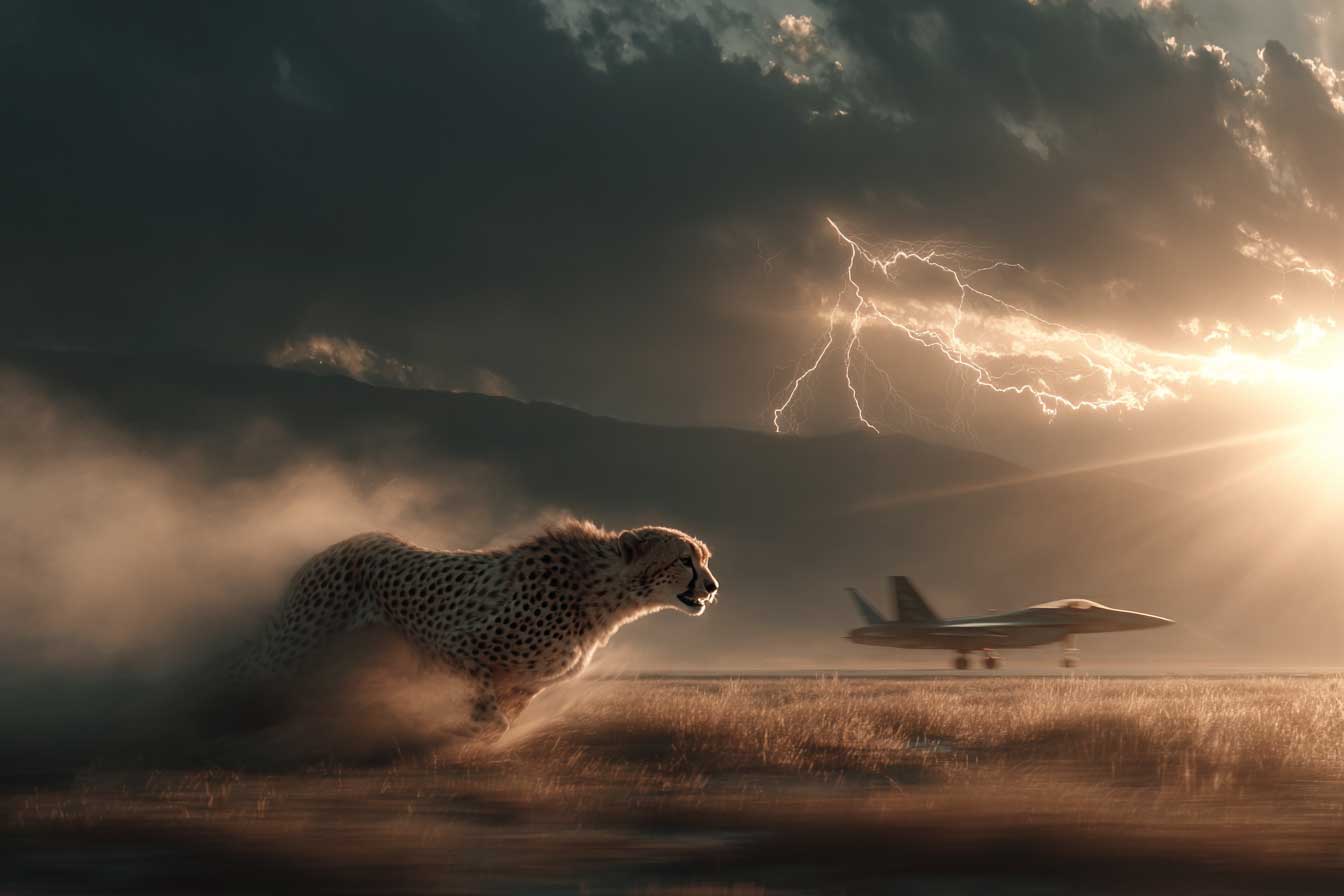
Speed is one of the simplest yet most profound concepts in physics.
It measures how fast an object moves — or in scientific terms, the distance covered per unit of time. Speed=DistanceTime\text{Speed} = \frac{\text{Distance}}{\text{Time}}Speed=TimeDistance
Speed tells us not only how quickly something changes its position but also forms the foundation for understanding energy, momentum, and motion in every physical system.
Nature has produced an incredible range of speeds. From the slow crawl of a snail to the explosive sprint of a cheetah, speed in living organisms is about energy efficiency, muscle power, and evolutionary design.
| Creature | Maximum Speed | Context |
|---|---|---|
| Snail | 0.03 mph (0.05 km/h) | Slow locomotion with mucus trail |
| Human (Usain Bolt) | 27.8 mph (44.7 km/h) | Record 100 m sprint |
| Cheetah | 70 mph (113 km/h) | Fastest land animal |
| Peregrine Falcon | 242 mph (389 km/h) | Fastest bird in dive |
| Sailfish | 68 mph (110 km/h) | Fastest fish |
The cheetah’s acceleration from 0 to 60 mph in under three seconds rivals a sports car — made possible by flexible spines, large nostrils for oxygen intake, and powerful muscles.
Humans, though slower, are endurance specialists. Over long distances, humans can outrun many animals due to efficient cooling and stamina — a factor that once made us effective hunters.
Beyond animals, substances themselves can move at extreme speeds depending on conditions.
At the atomic level, everything is in motion — even when we feel still.
Sound is not an object, but a wave that travels by vibrating particles in a medium — air, water, or solid.
The denser the medium, the faster sound travels. That’s why if you put your ear to a railway track, you hear a train long before it arrives — because sound moves faster in metal.
Light moves at 299,792 km/s (186,282 miles/s) in a vacuum.
Nothing with mass can exceed this speed — it’s the cosmic speed limit according to Einstein’s theory of relativity.
When light passes through air, water, or glass, it slows slightly due to interaction with atoms, causing refraction — the bending of light.
Thunder and lightning show two dramatically different speeds of nature:
You can estimate how far a lightning strike is by counting seconds between the flash and the thunder — every 3 seconds roughly equals 1 kilometer distance.
Any motion faster than the speed of sound (Mach 1) is called supersonic.
When objects exceed Mach 1, they produce shock waves, heard as a sonic boom.
At Mach 5 (≈6,174 km/h) or greater, an object is hypersonic.
Speed is relative — it depends on the observer’s frame of reference.
For example:
In Einstein’s Special Relativity, when speeds approach the speed of light:
At light speed, time for the traveler would stop completely — an idea that changes our perception of reality and motion.
| Category | Example | Speed |
|---|---|---|
| Fastest animal (air) | Peregrine falcon | 389 km/h |
| Fastest vehicle (land) | Thrust SSC jet car | 1,228 km/h (Mach 1.02) |
| Fastest spacecraft | NASA Parker Solar Probe | 532,000 km/h (relative to Sun) |
| Speed of light | Electromagnetic radiation | 299,792 km/s |
| Cosmic rays | Subatomic particles | Up to 99.999999% c |
Nothing we know moves faster than light — though quantum entanglement hints at “instantaneous” correlations beyond classical speed, it doesn’t transmit usable information faster than light.
Kinetic energy grows with the square of velocity: Ek=12mv2E_k = \frac{1}{2} m v^2Ek=21mv2
That means doubling your speed quadruples your kinetic energy.
Hence, crashes at 200 km/h are not twice, but four times as destructive as at 100 km/h.
Speed gives us power but demands control — whether in biology, technology, or cosmic motion.
From the first wheel to rockets, humanity has always sought to go faster.
But in physics, speed is not just movement — it’s the translation of energy into change. It’s what connects matter, light, and time.
As we advance:
Still, for now, light remains the fastest traveler — a cosmic constant, a reminder of how vast the universe truly is.